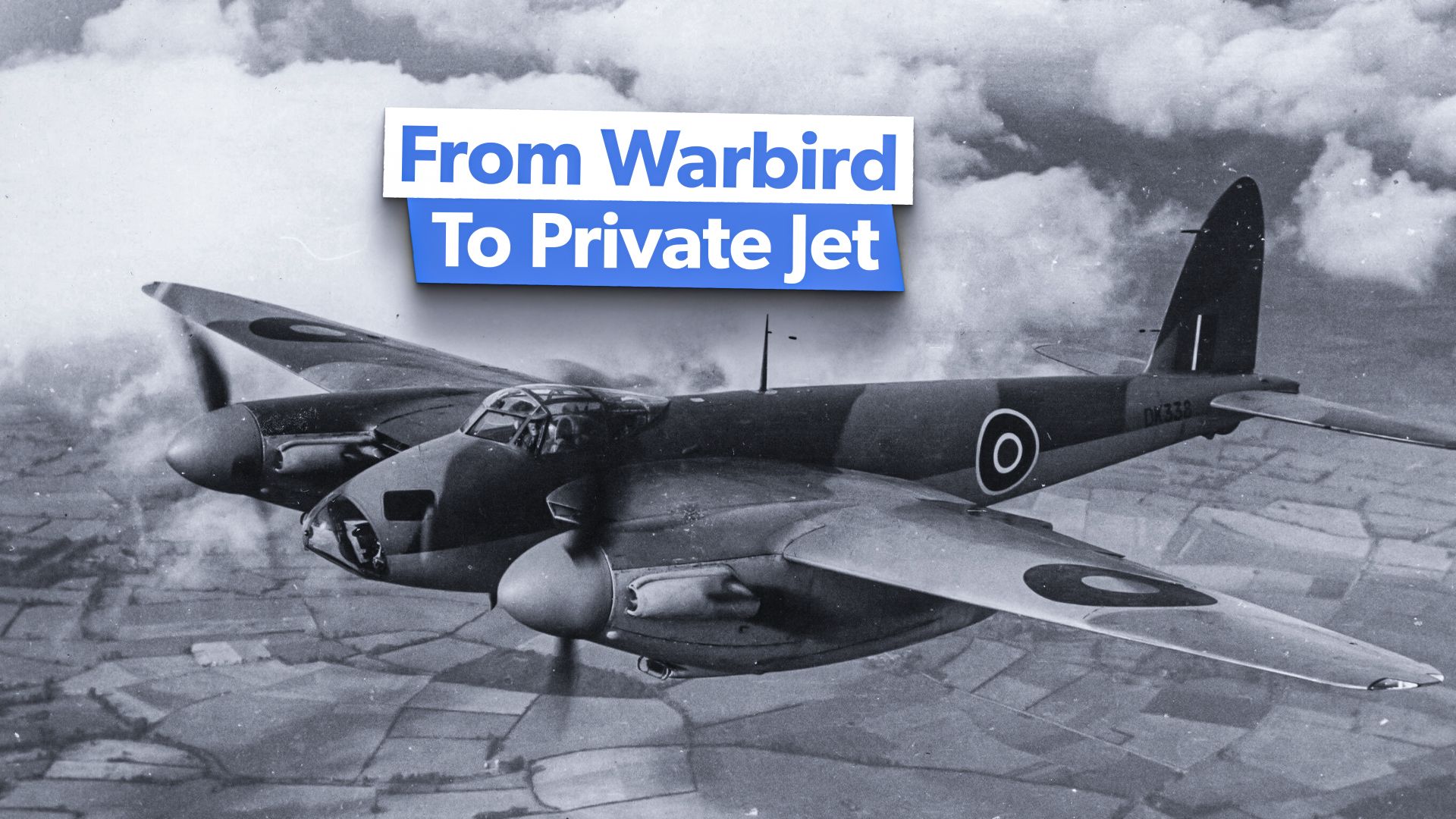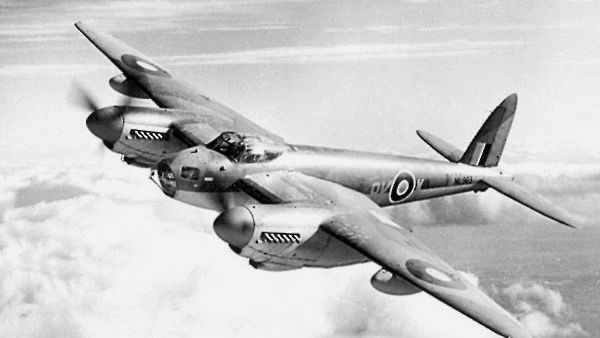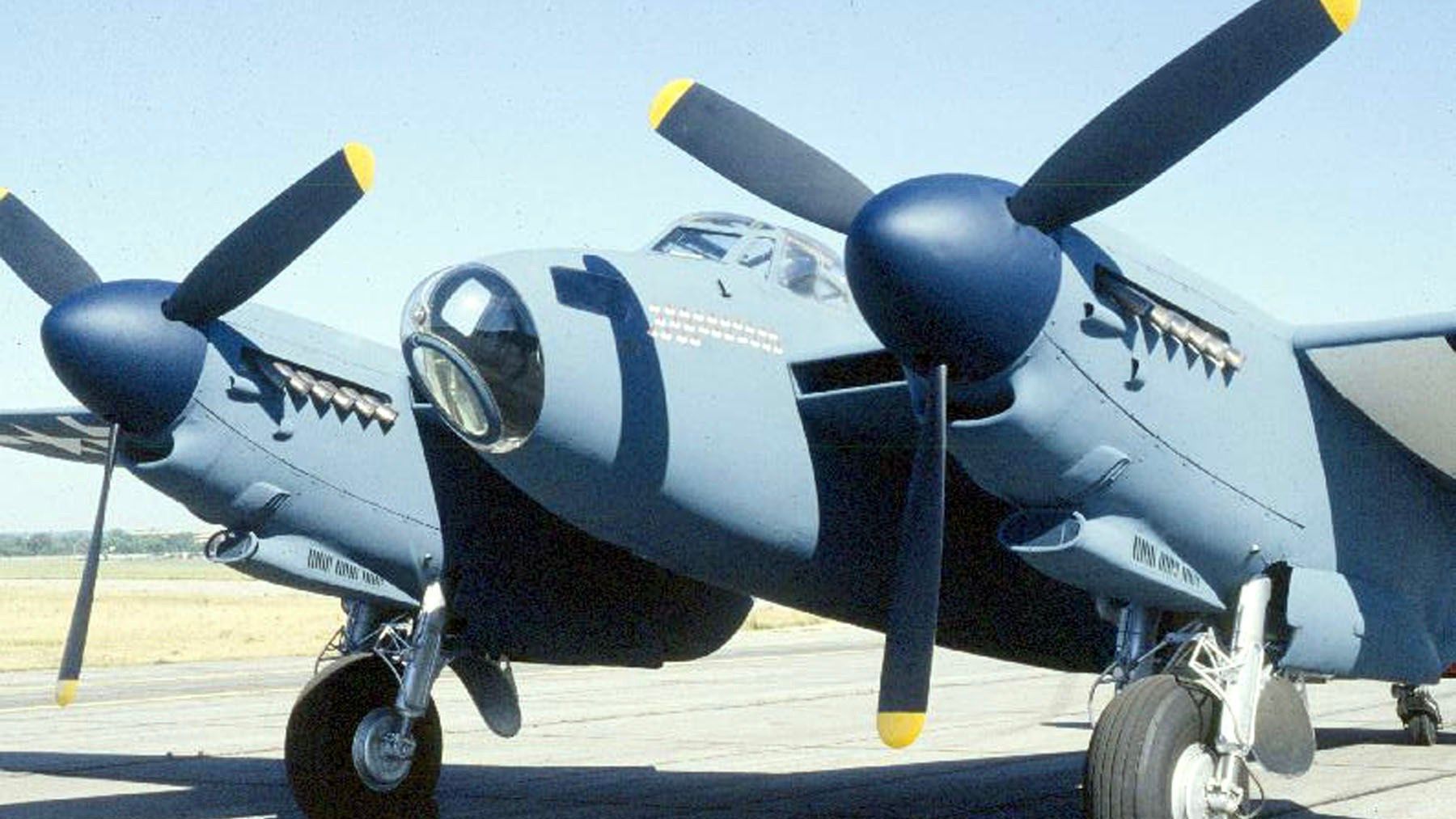Summary
- The de Havilland Mosquito was a versatile aircraft used for various roles such as fighter-bomber, tactical bomber, trainer and for VIP transport.
- Over 35 variants of the Mosquito were produced to increase bomb load, bomb bay size, and range, fulfilling its multi-use design.
- Notable events include Operation Jericho, bombing Berlin Broadcasting Station, and Mosquito’s final RAF mission in May 1945, hunting submarines post war.
The de Havilland Mosquito was the fastest flighter-bomber of World War II. It was a versatile and high-performance aircraft, also known as the DH98 Mosquito. Made by the de Havilland Aircraft Company, the aircraft contributed to the success of the Royal Air Force in Britain during the Second World War. Let’s find out more about it.
More about the ‘Mossie’
The de Havilland Mosquito was an innovative design, the airframe being made of wood in a ‘sandwich’ construction method. The British twin-engine combat aircraft had two Rolls-Royce Merlin engines and three-bladed propellers.
It was based on the pre-war high-speed DH88 Comet Racer and the DH91 Albatross airliner. It was popular with pilots and nicknamed the ‘Wooden Wonder’ or more often just ‘Mossie’.
Early days
Whilst Britain was at war, there was a heavy concentration on building the fighter-bombers, such as the Vickers Supermarine Spitfire and the Hawker Hurricane.
New facilities were being created to meet the demand for aircraft and production was very focused. Materials were in short supply, so the Air Ministry had to look for alternatives, but the requirement was also that new aircraft be able to hold multiple roles.
Although the design of the Mosquito was originally unpopular, de Havilland persevered with the aircraft. The Air Ministry decided to look again at the Mosquito and the idea of a high-speed light reconnaissance bomber that could fly at 400 mph.
Secrecy was maintained during its development, but by March 1940, de Havilland was authorized to build a fighter version of the aircraft.
Prototypes and progress
There were three prototypes built, but with Britain still in the throes of wartime, development was slow to progress. The first DH98 flew on November 25, 1940, with Geoffrey R de Havilland (junior) at the controls with John E Walker, the chief engine installation designer. They described the take-off as ‘straightforward and easy’ and the flight was relatively problem-free.
The second prototype flew on June 10, 1941, as a photo reconnaissance aircraft. The third prototype was developed as a fighter-bomber with a cannon and machine gun armament. Airborne Interception equipment was fitted to enhance its night and day fighter capabilities.
Production and variants
The ‘Mossie’ was an immediate success and well known for its bombing precision, pathfinding and low-level strike abilities. There were over 35 variants of the Mosquito as the aircraft needed an increase in bomb load and a larger bomb bay.
Its range was also increased by the use of auxiliary fuel tanks. The Mosquito was built in Britain not only by the de Havilland Aircraft Company, but also by Airspeed, the Standard Motor Company and Percival Aircraft Ltd. Overseas production also took place at de Havilland facilities in Canada and Australia.
Specifications:
(Data from BAE systems)
|
Powerplant |
2 x 1,710 hp Rolls-Royce Merlin 76/77 V12 engines |
|
Span |
54 ft 2 in |
|
Maximum weight |
23,000 lbs |
|
Capacity |
T wo crew |
|
Maximum speed |
408 mph |
|
Range |
1,485 miles |
Notable events
The Mosquito was famous for taking part in Operation Jericho in February 1944. Nine Mosquitos took part in the bombing of Amiens prison near the Somme Valley, which was captured by the Germans.
Low-level bombs destroyed the prison walls and the guard house allowing 255 allied prisoners to escape. Unfortunately, 182 were recaptured.
In another attack, Mosquitos bombed the Berlin Broadcasting Station, whilst Herman Göring was speaking, taking his celebratory speech off the airwaves. He is said to have said afterward to German aircraft manufacturers:
” In 1940 I could at least fly as far as Glasgow in most of my aircraft, but not now! It makes me furious when I see the Mosquito. I turn green and yellow with envy. The British, who can afford aluminium better than we can, knock together a beautiful wooden aircraft that every piano factory over there is building, and they give it a speed which they have now increased yet again. What do you make of that? There is nothing the British do not have. They have the geniuses and we have the nincompoops. After the war is over I’m going to buy a British radio set – then at least I’ll own something that has always worked.”
The last RAF mission for the Mosquito was on May 21, 1945, when squadrons from RAF Coastal Command hunted for German submarines that might not have surrendered post-war.
The versatile aircraft and final days
The aircraft fulfilling its multi-use role became not only a fighter-bomber, but a tactical bomber, night bomber and trainer aircraft, to name a few. There were also Sea Mosquitos with folding wings used on naval aircraft carriers.
This became common after Eric ‘Winkle’ Brown landed a modified Mosquito on the HMS Indefatigable in March 1944. More unusually, perhaps, ten unarmed Mosquitos were used by the British airline BOAC as high-speed transport for VIPs and special cargo being carried in Europe.
In its final days, the Mosquito was used as target towing Tugs, by the RAF and some were converted for this purpose only, by the Belgian Air Force. The last operational flight of the Mosquito was in May 1963 when the aircraft was retired. By this time, 7,781 of the de Havilland Mosquito had been built and the type often served with allied forces around the world.





